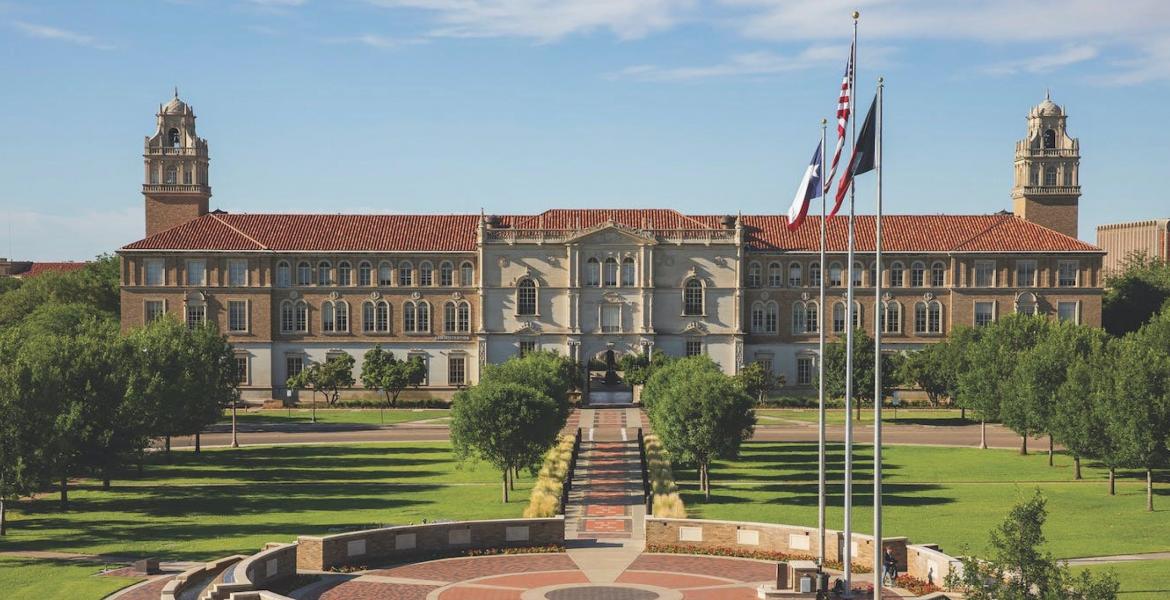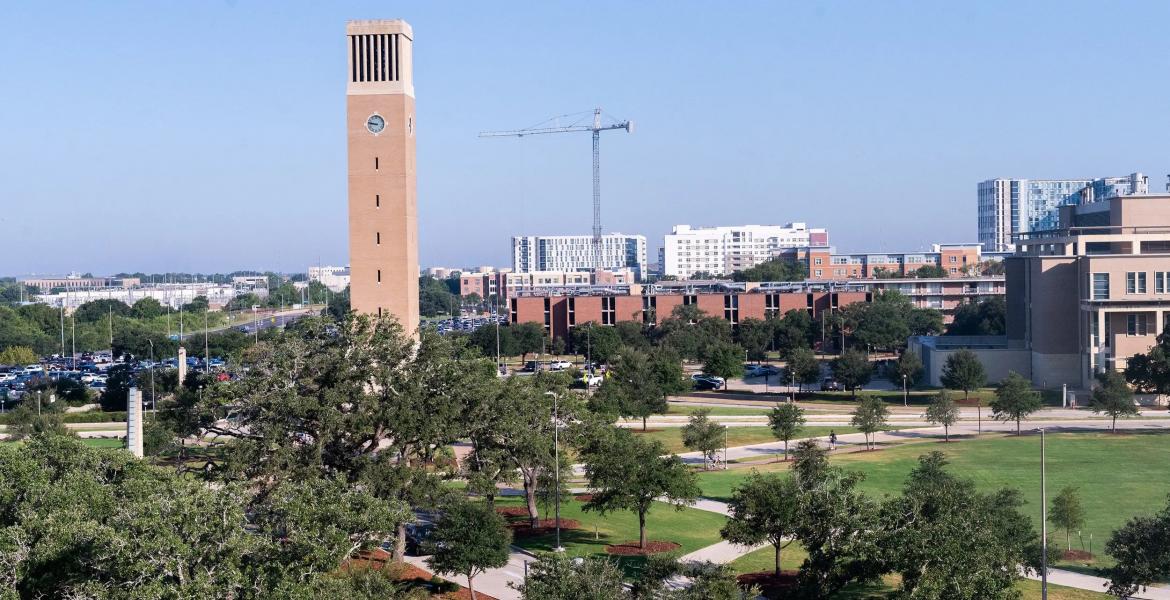The first day of school starts with an insurmountable amount of chaos. Many students, recently moved into their dorms, scramble to dress and make their way to classes while commuter students struggle to find parking, a common problem at Angelo State University. As these students fight to find a parking space, freshman students on campus excitedly look for their classes and contemplate what their professors will be like, and the professors wonder what the new semester will bring. Not to mention, they’ll get to observe and revel in the increased number of students walking the halls and filling their classrooms this fall.
Such is the first day of school at ASU, and this 2015-16 academic year will not only witness the highest enrollment numbers ever, if projections prove to be true, but it also has two new programs that will make the top-ranked college more competitive and cutting edge.
Although enrollment numbers will not be released until the 12th day of classes, President Brian May said, “We were up last spring. We were up this summer. We’re hoping to be up this fall.” ASU reported that its enrollment was 5,963 in the Spring 2015 semester.
A combined effort among the staff, faculty and administrators are responsible for the increase.
“We have had increases in every area: retention of current students, graduate school enrollment, numbers of incoming freshman and transfer students, and students taking courses through our new Dual Credit initiative,” May said in a message to the ASU community.
Through the Dual Credit initiative, Texas high school students can take college courses for credit. There are two types of programs offered, and that includes an on-site Regents Scholars Dual Credit program and on off-site Presidential Scholars Dual Credit program, which started during Spring 2015. There are 17 schools, including San Angelo Independent School District, participating in the latter program.
May is so excited about the increase in numbers (which he assures will be revealed soon), and two new programs, that he’s asking the ASU community to share the university’s new video, “Why Make ASU a part of YOUR story?” which can be found by clicking here, or watch it below:
If enrollment isn’t enough for cause of celebration, the new Civil Engineering Program and Web Development Programs are.
ASU Engineering and the Future
Dr. William H. Kitch, the new department chair of the Civil Engineering Program who settled into his new home and role four weeks ago, said he can't take credit for implementing the undergraduate degree program, but he's excited to be a part of it.
“Dr. [Paul K.] Swets, Dr. [David L.] Bixler and Dr. [Donald R.] Topliff put a lot of work into this program,” Dr. Kitch said. “They pumped the football up and kicked it down the field. I just caught it.”
This work Dr. Kitch spoke of metaphorically included Swets, Bixler and Topliff getting the $2.87 million grant from the Department of Education and getting the initial approval for the program. In addition to the implementation, they worked hard to find someone with the savvy to run the program; Dr. Kitch made the cut.
“I’ve spent 21 years as a professional engineer in both the private and public sector,” Dr. Kitch said. “I also spent almost 10 years teaching engineering at the college level, and started with Cal Poly Pomona.”
Since 2006, Dr. Kitch has taught both undergraduate and graduate courses in geotechnical engineering, foundation design, engineering management and professional engineering practices, said a press release about the professor. As for education, Kitch received both his bachelor’s and master’s degrees in Civil Engineering at University of Illinois where he graduated with honors. He received his doctorate at the University of Texas at Austin.
With his knowledge and credentials, Kitch said his goal is “to have the best Civil Engineering program in Texas.”
“There’s a demand and desire for students to enroll in the program,” Dr. Kitch said.
This demand and desire from students has exceeded both Dr. May and Dr. Kitch’s expectations. The chair said, “I originally thought we would have 15 to 20 students, but as of now, we have 55 students enrolled; more are interested in transferring, which will give us 65 students.”
“I didn’t even have to do any recruiting,” Kitch stated.
In addition to student demand, there’s a need for Civil Engineer graduates locally.
“Since I’ve been here, I have visited local engineers and agencies in the area,” Dr. Kitch noted. “They want to hire engineers locally, but can’t because there aren’t any.”
Additionally, Dr. Kitch said he talked to Texas Department of Transportation (TxDOT), and found the agency hopes to have interns from ASU join the company.
Thus far, the new Civil Engineering program is one of two created across the globe this school year, Dr. Kitch said. The other program is in Australia.
“I’m thrilled to be here and honored to build the program. I’m also so amazed and excited by the support of ASU, the city, and the Civil Engineer program. I feel so welcomed, and I’m not sure if I have ever experienced that,” Kitch explained about his new endeavor.
According to the ASU website, the median wage for engineers in Texas is $89,840, and $82,710 in the U.S. Those students who want to be surveyors are looking at a median wage of $53,420 in Texas, and $58,740 in the U.S.
ASU Computer Science
Another program that will increase student demand is the Web and Mobile Development Certificate Program. Dr. William (Bill) Wolfe, chair of the Department of Computer Science and who President May said “is the driving force behind the program,” said this new option will provide another dimension to the computer science degree program.
“This program provides a harmonic set of skills students should have,” Dr. Wolfe stated. “A number of web systems are driven by mobile phones. It’s no longer just about HTML. Programs need to be responsive and have to work as well on phones as they do on a PC.”
Overall, the certification program is recommended for computer science majors and minors who plan to enter into the mobile application development industry. In a press release about the program, a recent survey by Gartner Inc. showed there is a strong need for programs like the one implemented at ASU this semester.
“By the end of 2017, market demand for mobile app development services will grow at least five times faster than internal IT organizations’ capacity to deliver them” and “mobile phone sales will reach 2.1 billion units by 2019, which will fuel demand for mobile enterprise apps that meet the high performance and usability of consumer apps,” Gartner found in its study.
Dr. Wolfe said by adding this certification to the curriculum, the Computer Science degree will be on “the cutting edge," and graduates will have this specialized experience to offer employers. He explained that traditional computer science programs have been around for 30 years, and most universities across Texas don’t wish to change them because the program works well as-is. However, with the increase in demand for gaming applications on the web and mobile devices, the program has to keep up with the change of technology, which is what ASU plans to accomplish and why the university “seems to be taking a lead” in this area.
“Motion and movement in this arena is hot and heavy, and it’s exciting to apply this technology to the real world. Kids need more real-life practice than theory,” Dr. Wolfe said.
Dr. Rob LeGrand, III, who will help oversee the program, said Web Programming will do just that by covering the use of Web coding standards, including JavaScript, HTML and CSS, to dynamic websites and mobile apps that work on any device or modern browser.
“When designing any computer science course at ASU, we are most concerned with preparing students for real careers in computing,” Dr. LeGrand said. “But even compared to the rest of our courses, this new certificate concentrates on real-world skills. In fact, a major goal of at least two of the four required courses is to allow students to begin a portfolio of their own work, which is especially important when looking for a desirable development position in games or in Web and mobile apps.”
LeGrand also stated that while excellent programmers with a track record can find a game-development job, there are many more openings for Web and mobile developers, and that need will only increase. Thus, this certification program will complement game development in a healthy way.
“We've had local employers ask for our best students with Web and mobile skills and we want to make sure our students have every chance to get them,” Legrand added. “Game development is exciting and important, but every company needs Web and mobile programmers.”
As for how the program exceeds others in Texas, LeGrand said the new certificate program has at least two advantages:
- It is an official part of ASU’s curriculum and will show up on a student's official ASU transcript.
- Other programs tend to concentrate on developing native apps for the Android and iOS platforms.
“While that is certainly important, we can use Web technologies to create apps that work on all modern devices. So instead of creating and maintaining an Android app, an iOS app, a Windows Phone app and a Web app all separately, which is a lot of work and requires various skills, we can create one app using JavaScript/HTML/CSS that looks and works the same on any device or browser, automatically adjusting to differences such as screen size. The Web Programming course (CS 3312) will show students how to do just that, essentially covering Web and mobile development basics in one course,” LeGrand said.
LeGrand added that ASU will offer more related courses in the future, which will deal with iOS and a more advanced Web course covering popular frameworks and full-stack development.
For more information about the program, click here.
Subscribe to the LIVE! Daily
Required






Post a comment to this article here: